The most successful urban developments embrace incremental growth to create better places that respond to the changing needs of communities.
In their book ‘The Temporary City‘, Peter Bishop and Lesley Williams advocate impermanence as a responsive and engaged approach to city-making:
‘Could temporary uses be a manifestation of the emergence of a more dynamic, flexible or adaptive urbanism, where the city is becoming more responsive to new needs, demands and preferences of its users?’
For us, the significance of this observation is that interim uses provide opportunities for communities to acquire agency in shaping their surroundings. A more adaptive approach to urbanism creates space to test unconventional uses, new social dynamics or spatial configurations. Importantly, it creates room to succeed, to make amends or even to fail.
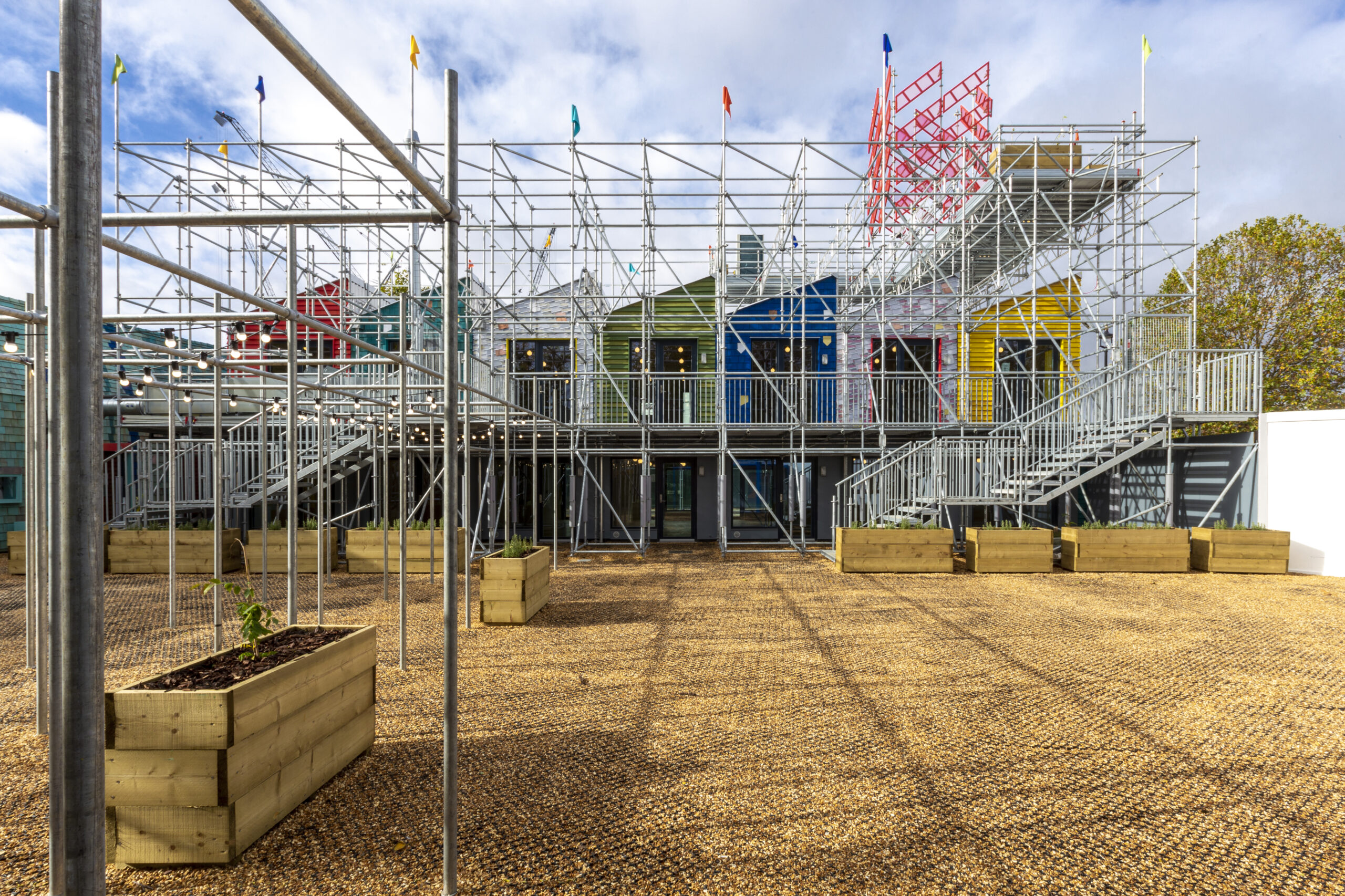
Ridding ourselves of the burden to design for all eternity and consciously embracing a looser design methodology allows us to learn and improve the way we do things. Or, more bluntly: knowing where to focus our design efforts is just as important as knowing when to stop designing. In our profession, the space that’s left for the unpredictable, the undefined and the unaccounted for is called contingency. This contingency is essential to allow uses and spaces to grow together.
Bishop and Williams conclude with a reasonable question to our profession:
‘Given the overwhelming evidence that cities are a complex overlay of buildings and activities that are, in one way or another, temporary, why have urbanists been so focussed on permanence?
Yet, designing temporary projects comes with an innate contradiction, as the real success of temporary projects manifests in their afterlife, the learning that they have conveyed, the joy they have brought and the pride they have imparted. Herein lies the challenge: how do you deliver a design which leaves a legacy that outlasts its lifespan?
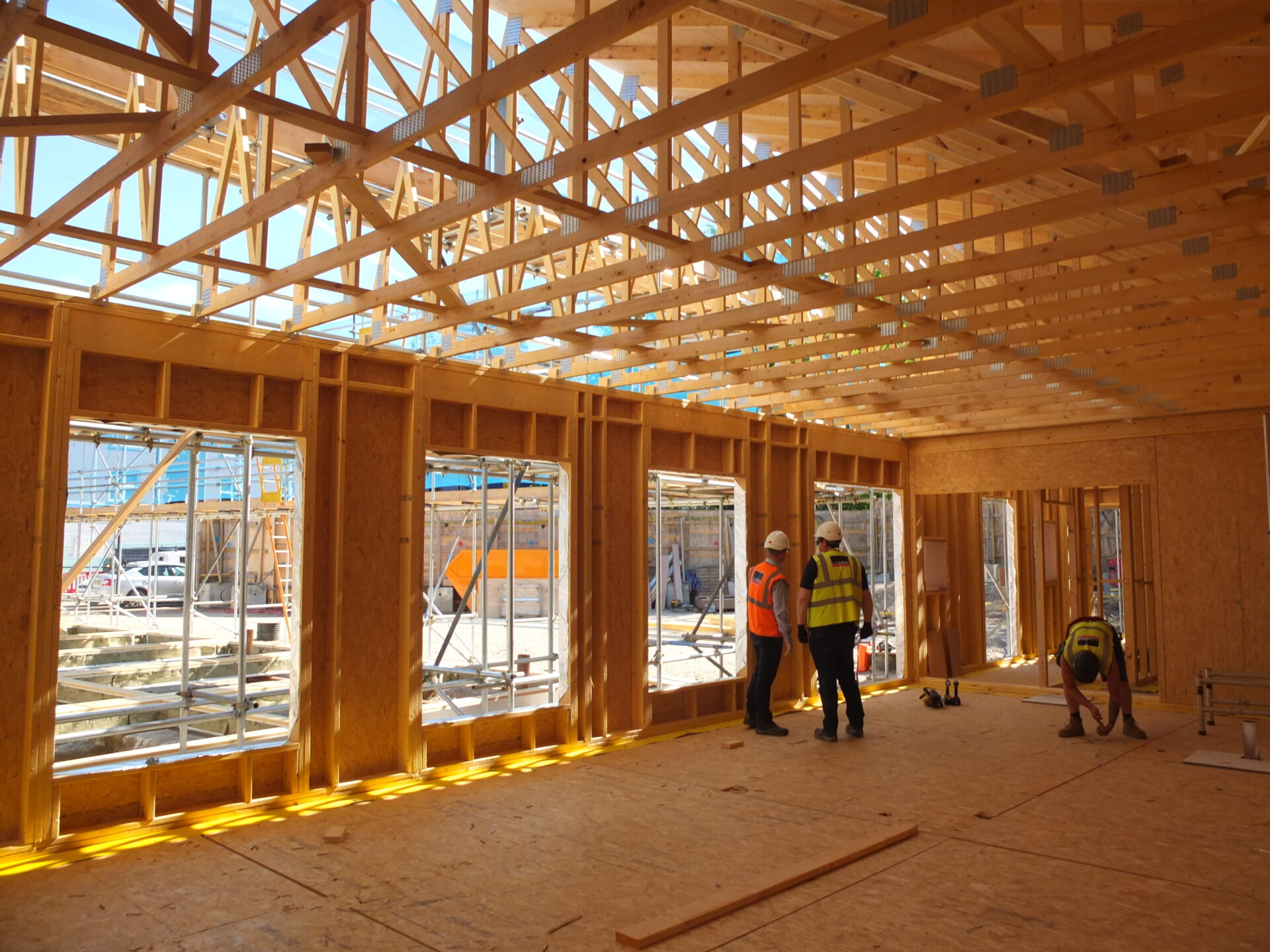
Working together on plans for the re-development of the Ebury Estate, Westminster Council and residents quickly realised that the success of the new neighbourhood would hinge on the continuous provision of key civic space throughout construction. That’s just what Ebury Edge does. A row of shops and workspaces animates the pavement on Ebury Bridge Road. A public hall hosts events and celebrations, a community garden affords a moment of respite from the busy urban surrounds and a new community café provides a place to meet. Ebury Edge will be there for 4 years. During its lifespan it will incubate new businesses, train rough sleepers in catering and provide routes into employment. It will make memories through hundreds of events held in the public hall, and it will establish community organisations and small businesses that have the capacity to occupy spaces in the permanent development.
Of course we are travelling with hope, but we also know that trusting others to embrace opportunities that our projects present is the most powerful prerequisite for securing their legacy.
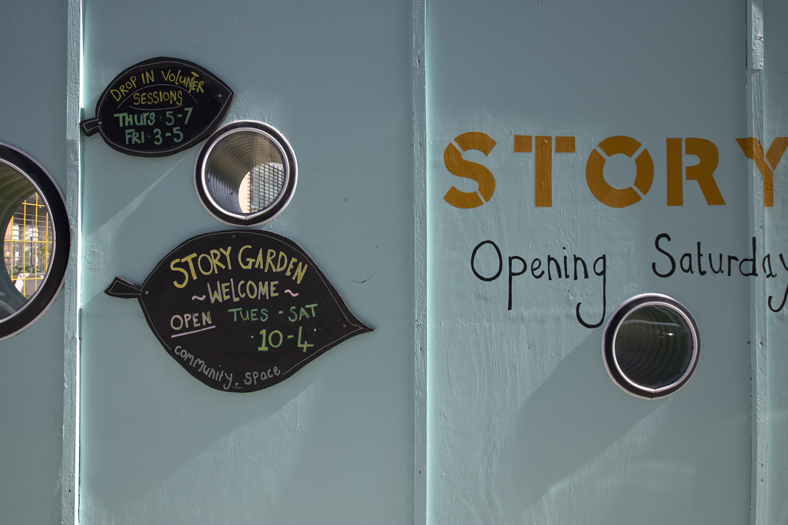
Another good example is the Story Garden at the British Library. A previously unused piece of land was offered to our friends at educational charity Global Generation on a temporary basis. Communities in adjacent Somerstown are amongst the most deprived 10% in England. We also knew from consultation that limited access to green space and air quality deficiencies are of great concern to local people.
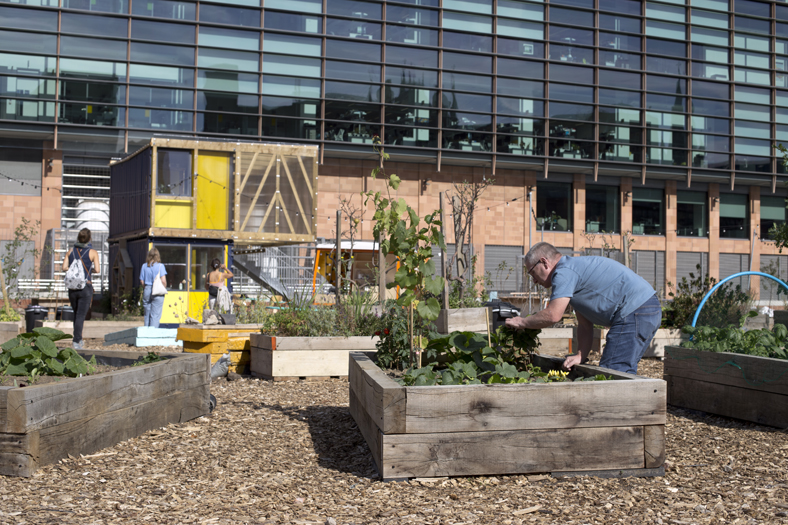
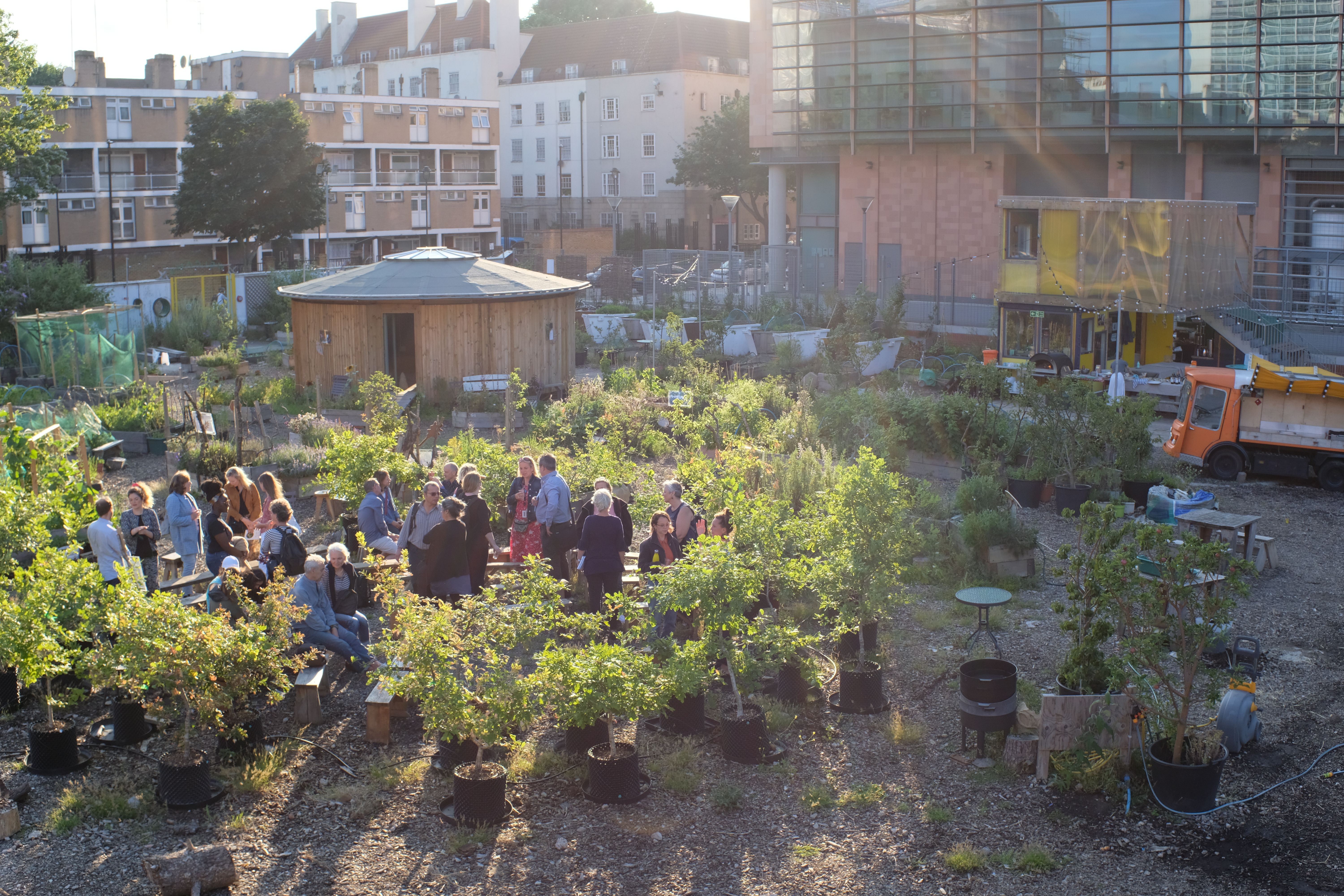
With a tight budget and a desire to engage as many people as possible in the design and construction of the garden, we did two things. First, we prepared and secured planning permission for a common plan for the site which anticipated growth over time. Secondly, we proceeded to build essential infrastructure, comprising a community kitchen, sheltered outside dining area, a growing tunnel, a small office, a toilet-block-cum-potting-shed and a community workshop. Restricting our involvement to the delivery of the bare essentials left room for others to complete the task.

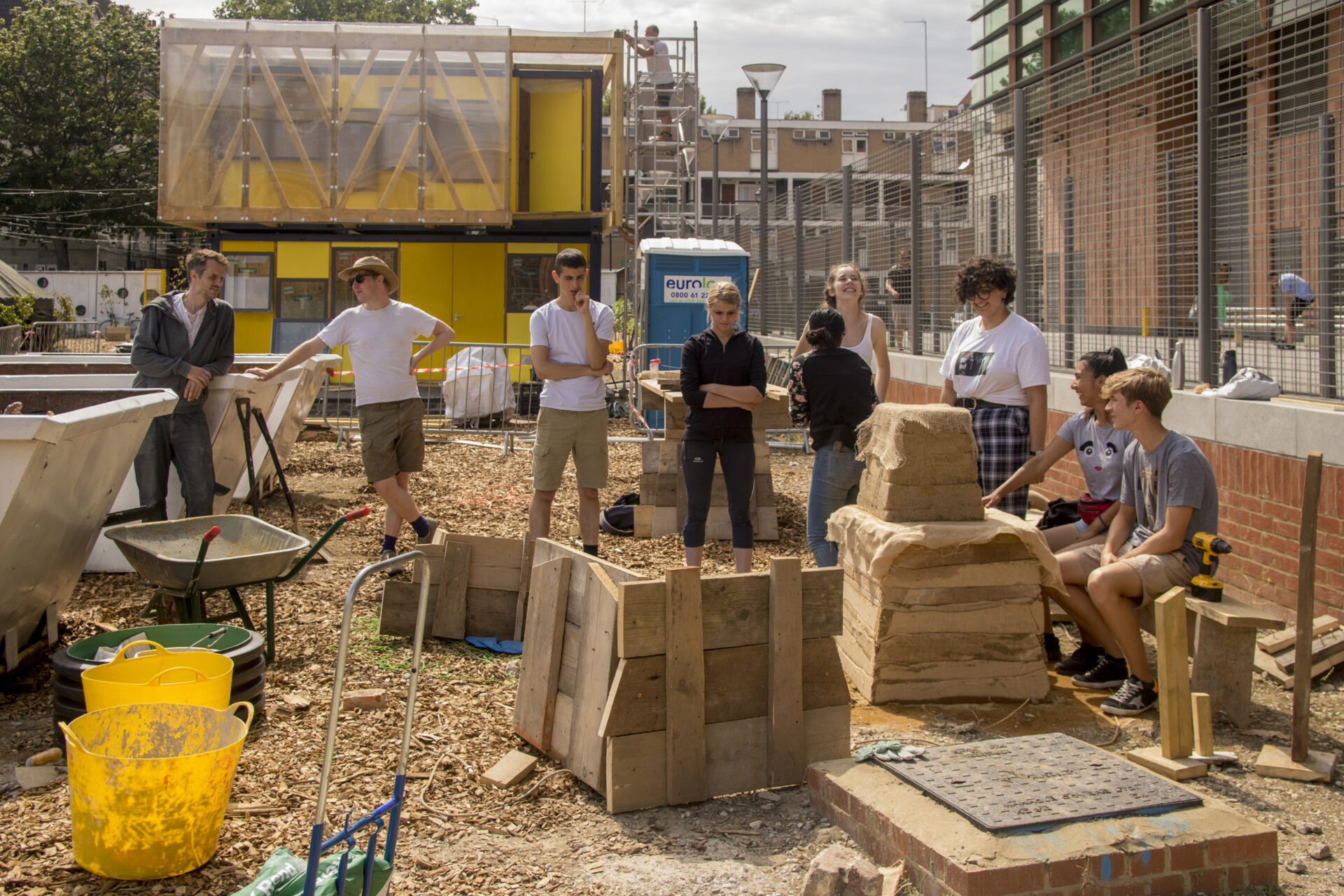
After we left site, the magic started to happen. Following practical completion, the community moved in. Summer schools made seating areas, corporate volunteers spread soil and mulch, school children made planters, architecture students designed and built a classroom. We have lost count, but there must be far more than 500 people who have actively helped to build the Story Garden, with thousands more visiting since it opened to the public. Jane Riddiford, founding director of Global Generation calls the Story Garden a garden of 1000 hands – maybe this is a gross under-estimate.
The Story Garden is a temporary educational and community space. Some of the buildings have been designed to be relocated when the site is finally developed, but the real legacy that the project will leave are the stories of inspiring learning, engaging conversations and communal lunches that people take along with them into their everyday routines.